Posts Tagged ‘Alfred Cloutier’
Minecraft Factions Alignment Design Concept by Alfred Cloutier
Tuesday, February 17th, 2015
Author’s note: This is admittedly a different kind of gaming article: one in which I outline rules I’d l*like* to see in a game. I have no ability or power to make these rules become real, but I think they are interesting enough to publish for public scrutiny… I’ve been playing Minecraft for a little while now, and the most compelling idea behind the game is that it is an open, persistent world, a so-called sandbox, where you can ignore the “game” elements, and just do what you want. It is also somewhat open-ended in that third-parties can create their own “mods”, which create new sub-games based on the Minecraft platform. If you don’t know what Minecraft is, ask any middle class kid, or go here: www.minecraft.net. The article below refers to “plug-ins” which are what I would call modifications to an online multiplayer Minecraft world, players can join one world and play cooperatively, or fight PVP (Player Vs Player). Factions is one of those PVP plug-ins. The developers of Factions are at www.massivecraft.com/factions and I wouldn’t have been inspired to write this without their hard work. I would also like to note that the idea of “alignment” is not original, I stole the idea from Martech’s Tradewars 2002, and I’ve seen at least one plug-in for Lord of the Rings Minecraft Mod that uses a tangentially similar system to what I outline below, though I wasn’t aware of that when I wrote this.
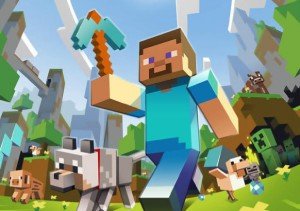
There have been more than a few iterations of Factions, and the following is what I would like to see as a plug-in for this style of play. I do not write plug-ins, so the following is an *idea* for a plug-in. First of all, Factions itself is a plug-in found here: http://www.massivecraft.com/factions . That link explains the plug-in and how it works in detail. I’ll give a very quick explanation here. Factions uses a “power” and membership system that allows players to manage territorial permissions, and gives players the ability to erode enemy permissions. Players band together in a faction under a single leader, pooling their resources, skill and power in order to prepare themselves for conflict with other factions. Territorial permissions prevent outside players from destroying (“griefing”) or stealing (“raiding”) anything within the territorial boundaries. But those boundaries may be contested if a faction’s “power” is less than the number of chunks claimed. (A “chunk” is a 16×16 square plot of land) Power is a measure of how much time a player has spent playing the game, and is reduced by deaths. A weak faction, with waning power may have their territory unclaimed if a raiding faction kills enough members of the besieged faction, reducing power below the number of chunks claimed. That’s the brief on Factions: Kill enemies so you can take their land and loot.
The Alignment plug-in idea came from a thread on www.sandlotminecraft.com about how betrayal is an imbalance of Factions. It is *much* easier to destroy a faction by joining it, then abuse permissions by griefing and raiding from within the faction. Mutiny from the inside. There are “permissions” a leader can set that help regulate this behavior, but on Sandlot, which is a family-friendly server, the commands and logic of permissions wasn’t always understood by every young player. Also, there was a nasty habit of some of the better players preying on others by ambushing them, either by luring them off of the protected spawn island, or by asking to be an ally, then very quickly using the “enemy” command and attacking the unsuspecting player. Alignment isn’t necessarily trying to “fix” this behavior, but it is intended to curb it, or at least give a warning to new players that some players have a history of betrayal and ambush tactics.
In the following outline, there are hefty penalties to having a negative alignment, but there are also some hidden bonuses, such as access to a different, more sinister set of NPC shops at the neutral spawn zone. Some players will enjoy “going evil” and having success even when everyone is warned of their approach, and there’s a price on their head…
Factions Alignment Rules:
Player access to different parts of the neutral spawn zone relies on “alignment.” Players gain or lose alignment based on their actions in the game. Alignment ranges from -1000 to +1000. Negative alignment is gained by committing acts that are treacherous and dishonorable (according to a rigid system). Positive alignment is gained by acts of helpfulness and honor (also, according to the game’s rigid system).
New players start with 0 alignment. Players less than 8 days old are considered “new”. After 7 days, players are no longer considered new players.
Players are free to attack each other at any time, except during “new-player cool-down”, which is the first 3 minutes after a new player’s first-ever login. Players are immune to other players during this first 3 minutes.
A “challenge” system modifies alignment: Like relations between factions, a player may offer an open challenge to specific players. These challenges remain flagged ON until either the challenger removes the challenge, or the challenged accepts the offer. A challenge is an offer to fight PVP (player versus player). Once the challenge is accepted, either player can kill the other without any loss of alignment ONE time. If one of the participants in the challenge is killed by the other, all challenge flags between those two players is removed. (The killed party can’t retaliate without re-challenging–which will be a sore spot for some losers of challenges. One option is the winner of the challenge automatically triggers a re-challenge to the loser, who can accept or ignore at will.)
Accepted challenges expire after 1 hour, at which time the accepting player will also receive -3 alignment. (Can’t spam-accept challenges, but not meet the challenges.)
Given the above, the following rules are used to modify alignment:
If a player kills another player outside of challenge, that player gets -25 alignment.
If a player kills another player with an unaccepted challenge, that player gets -20 alignment. (Giving other players warning before they ambush them is *slightly* more honorable than just killing them with no warning.)
If a player creates a faction, that player gets +10 alignment (faction creation costs 200 tokens).
+1 alignment for inviting a new player to an owned faction ONE time (can’t revoke and re-invite, gaining infinite alignment).
-1 alignment for re-inviting any player after revoking their invitation.
+5 alignment for “Repopulation” achievement ONE time. (Breeding cows…)
-5 alignment for removing the ALLIED flag from an allied faction.
+3 Alignment for filling a donation double-chest to max ONCE per day with any mix of items. (Needs to be max full, all stacks need to be at maximum, or if that is not easily codeable, make donation chests that have specific items that need to be filled to max: wood, food, tools, armor, weapons, etc.)
A new player can give +5 alignment to anyone ONCE. This is lost after 7 days if not used.
If a player kills a new player, they get a total of -40 alignment.
PVP logging gives a player -10 alignment, and kills that player. (PVP logging is when a player logs out of the game in the middle of combat. Combat starts when one player damages another player and ends 30 seconds after the last damage)
(The following bounty numbers will have to be playtested. These prices need to be just right to work.)
+1 alignment for every 75 tokens of kill bounty placed on Scoundrels who have -50 or less alignment.
+2 alignment for every 75 tokens of bounty on Wanted players who have -100 or less alignment.
+3 alignment for every 75 tokens of bounty on Archenemies who have -500 or less alignment.
+1 alignment for accepting a challenge ONCE per hour (can’t spam accept challenges and trade alignment through fake fights).
-3 alignment for letting a challenge expire after accepting a challenge. Challenges expire after 1 hour.
-5 alignment for quitting a faction.
-10 alignment for quitting a faction within the first hour of joining that faction (total -15 alignment).
Spawn Shops:
(At the neutral spawn zone, there will be NPC shops that sell rare items to players. Prices, in tokens, to be determined by admins. Prices shown are approximate Sandlot prices.)
A player with neutral or positive alignment may access the General shops:
Steak and Melons (2 tokens for 30 melons, 4 tokens for 30 steak)
Armors: Iron, Diamond, Gold (2 tokens per armor piece)
Swords and bows (2 tokens for either Fire Aspect I Wooden, Knockback I Stone, or Unbreaking III Iron Swords, 1 token for Punch I Bow, 1 token for 30 arrows.)
Bounty Hunter – Place and collect bounties on negative players
A player with positive alignment may access the Specialty Spawn shops:
Tree saplings & Lily pads
Trinket Rares: slime balls, etc.
Healing and regen potions (5 tokens for healing I potions, 10 tokens for Regen II potion)
A player with +25 Alignment gains access to Arcane Municipality shops:
Unbreaking & Sharpness books (10 tokens for Unbreaking I book, 22 tokens: Sharpness I)
Dog Spawn eggs (45 tokens)
Fire resist and Strength potions (10 and 5 tokens, respectively)
A player with +50 Alignment gains access to Paladin’s Club shops:
Protection & Smite books (22 tokens each)
Horse Spawn eggs (25 tokens each)
End Portal Frame (75 tokens per block)
Horse armor (10 tokens for any type)
A player with negative alignment may not access any of the above shops, except Bounty Hunter, and a negative player may never collect a bounty, only place one.
A player with -50 alignment may access the Scoundrel shops:
Cobwebs & Cacti
Cauldrons
Blue Orchids & Ink Sacs
Chain Armor, Leather armor (2 tokens per armor piece)
A player with -100 alignment may access the Antagonist shops:
Spider eyes, mushrooms, & sugar
Milk Bucket
Invisibility & Night vision potions
Power books (20 tokens each)
Diamond Armor (2 tokens per armor piece)
A player with -500 alignment may access the Archenemy shops:
Harming Potions (13 tokens each)
Cat Spawn eggs (50 tokens each)
Thorns books (22 tokens each)
End Portal Frame (75 tokens per block)
Bounties:
Any player may place a bounty on a negative player. (It is possible to “buy” yourself back to positive alignment, but it is expensive and difficult to game–see alignment impact of bounties above.) Only positive or neutral players may collect bounties for killing negative players. Only token bounties affect alignment, so players with other forms of wealth need to convert to tokens by trading before putting a price on someone’s head.
Other Effects of Negative Alignment:
Players with negative alignment have an “aura” equal to the absolute value of their alignment. If a player has -50 alignment, their aura is 50 blocks. When an aura overlaps with another player’s position a private chat message is sent: “The is approaching within blocks.” This message is sent only at the instant the aura overlaps another players position–it doesn’t spam the chat with the aura message. Also, like in some capture the flag servers, and other team plug-ins, players with auras or challenges are shown on the right upper third of the screen, with some flags shown: color of playername: alignment (red=negative, white=0, blue=positive); C: this player has challenged you; A: you’ve accepted this player’s challenge. Negative players also have a small compass next to their name, showing where they are in relation to any player in their aura.
Negative ranks:
-1 to -49: Weasel
-50 to -99: Scoundrel
-100 to -499 Antagonist
-500 to -1000 Archenemy
Players with negative ranks can’t receive custom titles available in Factions, and will always have their negative rank as their title, in red (color code “&4”). For example the -300 alignment player JohnSmith would have the title (Antagonist) JohnSmith, and the leader of JohnSmith’s faction would be unable to change the title.
Players with negative alignment have a /spawn cool-down of 5 minutes. (They can only use the /spawn command every 5 minutes). Normally there is a 30-second wait time for the command to warm up.
Negative players have a much smaller spawn protection area than positive players, about half the area of spawn, and they can only stay there for 10 minutes before the protection wears off.
Other Rules Inspired by the Sandlot Factions Server:
When a player dies, they are re-spawned in the spawn zone.
Players use tokens for economy. Use /tokens command to gain 10 tokens. This command may be used once per hour. Using the /tokens command reduces a players power by 2.
A player always drops at least one token upon dying.
Players gain power at the rate of 2 per hour of in-game playing. Per normal faction rules, power allows factions to keep claimed land.
Claiming land requires membership in a faction, permissions within that faction, power, and 1 token per chunk claimed.
Chests can be locked per /lwc plugin. Unclaiming removes these locks. Chests are not immune to blasts.
Suits of armor are available at spawn, for 2 tokens per piece, 8 for a full suit.
If full suits of armor are worn:
Diamond Armor Confers Weakness, Slowness, & Resistance (Weakness & Slow are conferred with any piece of armor worn, Resistance is only conferred with full suit worn)
Iron Armor Confers Strength and Critical Threat (any attack that would otherwise not be a critical hit has a 65% of being a critical hit)
Chain Armor Confers Jump Boost II (or whatever allows 2-block jump) and Regeneration III
Gold Armor Confers Haste & Respiration & Aqua Affinity
Leather Armor Confers Speed & Invisibility (armor is not invisible)
(The effects are triggered by player movement, and have a duration of 1 or 2 seconds.
If a players doesn’t log into the server after 10 days, they will have to start over, but they will never be considered new players in that iteration of the game.
Enchantment tables are limited to level 5
Fishing is allowed
Villagers do not trade, but do cause golems to spawn
If a player is afk (away from keyboard, or idle) for 10 minutes, they are kicked from the server.
Other Rules:
Relation cool-down: 1 minute cool-down between changing faction relations (you can’t ally a faction, then ambush them after an instant relation change). Relations can only go one step in any direction (can’t jump from ally to enemy, need to be truced, then neutral, then enemy).
New players may take freely from donation chests at spawn.
The End respawns randomly every 24-72 hours, with a 20% chance of a new Ender Dragon spawning. When a player is first damaged by the Ender Dragon, a chat message is sent out that they have been damaged by the dragon.
Need to buy sethome2 gem: gem is destroyed when player uses sethome2 (50 tokens)
Notes and Optional Rules:
Not all of the above ideas have been play-tested. There would need to be a test period where players try to exploit the system so imbalances can be corrected. For example, in the current Sandlot Factions world, Diamond armor has a lot of drawbacks, but most players still choose to use it, often compensating with a strength potion when in PVP combat. The other armors just can’t withstand the damage dealt by power weapons. Because they are all the same price (8 tokens for full suit), the other armors are temporary novelties. If all the armors are to be the same price, there should be some powerful, or interesting balances, not just a bunch of players walking around in diamond most of the time. I’ve increased the status effects of the armors from what they were at Sandlot. Gold armor is very good for mining, and I use it often for that purpose, but only when safe. I didn’t change gold armor from the Sandlot settings. Iron armor is sometimes used by really good fighters, or players who haven’t realized that diamond is better. I added Critical Threat to iron, which may already exist in other mods, but as far as I know, I made up. This would increase damage output, and possibly give more movement options as you don’t have to jump to get a crit. The current jump boost with chain armor is used in rare exploration cases, but I wouldn’t be carrying anything valuable if I’m in a danger zone while wearing chain armor. I would consider the “regeneration” ability of chain armor as it exists on Sandlot to be non-functional because it doesn’t appear to work when your hunger bar isn’t maxed out, and then it feels like you’re just regenerating slightly faster than you would at full health anyway. I increased the status to Regen III, and would have it work no matter how hungry you are, this should get players to a nearly Halo-like shield regen. Leather armor is actually good for speed mapping, and I haven’t tested it in PVP situations. I presume it would only be useful for *running away* which is a legitimate defensive strategy. I increased the power of leather by adding invisibility, which would make it a semi-stealth armor, and mixed with the speed *might* be a good choice for archers.
Power Armor Optional Rule:
Power Armor is an idea that may be overpowered, but fun. Testing will be needed. Players may only access Power Armor shops after reaching -600 alignment or +100 alignment. Power armor has the same durability as gold armor, costs 250 tokens, and you must buy a complete set at once.
-Positive players may purchase Power Gold Armor which has Unbreaking I, Regeneration III, Strength II, Protection III, Aqua Affinity, Water Breathing, Depth Strider III, and Health Boost. Not as good as a notch apple, but it would always be on.
-Negative players may purchase Power Chain Armor which has Thorns III in chestplate, Fire Resistance, Fire Aura 1 (the armor attempts to start fire like flint & steel in all 8 adjacent squares), Jump Boost IV, Feather Falling IV and Teleport 12 (click Use with nothing in hand, and will teleport 15 blocks toward cross-hairs)
About the Author:
Alfred O. Cloutier has contributed to Dragon Magazine, and has edited for a number of other gaming publishers. He can be found on Facebook.
Join the Battleground Games & Hobbies community forums!
Please don’t forget to check us out on Facebook and follow us on Twitter @battleground_gh!
Tags: Alfred Cloutier, Minecraft
Posted in Blog, Featured Author, Featured Post, Popular Posts | No Comments »
EXCLUSIVE – Erin M. Evans Interview: ‘Fire in the Blood’ by Alfred Cloutier
Wednesday, January 14th, 2015
Erin M. Evans Interview: Fire in the Blood
by Alfred O. Cloutier
Alfred O. Cloutier was able to sit down with award-winning author Erin M. Evans, writer of Fire in the Blood, the third book in the Forgotten Realms series Sundering.
In Fire in the Blood Erin M. Evans continues the riveting tale of her Sundering character, Farideh, as she becomes embroiled in a Forgotten Realms-flavored game of thrones.
In a direct follow-up to the third book in the Sundering series, The Adversary, young warlock Farideh falls into the midst of a battle for the throne of Cormyr. As the war brought on by the Sundering rages across Faerûn, princes and princesses, wizards and rogues scheme to capture the seat of power of the Land of the Purple Dragon—with Farideh and her allies caught squarely in the middle.
What is Farideh up to?
In Fire in the Blood, Farideh travels to the Forest Kingdom of Cormyr, home of her sister’s lover, Brin. Brin’s been in the series since the beginning, and this is the book where you meet his family and unravel his conflicts—beginning with an unwanted engagement to the princess of Cormyr and a brewing succession crisis. Alongside that, you have Farideh coping with the realization that she’s a Chosen of Asmodeus, the god of sin, and trying to figure out where she stands with Lorcan. And then all Hell breaks loose.
Is there any relation between the Dragon Throne and The Wyrmskull Throne?
None at all. The Dragon Throne is a nickname for the throne of Cormyr. Before it was settled by humans, Cormyr was ruled by the Purple Dragon, Thauglorimorgorus.
Does Fire in the Blood pick up where The Adversary left off?
It picks up around a month later, when the party has settled into life in Cormyr (for various values of “settled”).
Have you been playing the new edition of D&D? What do you think of it?
In my game we just converted from the play test rules, but we’ve been having a lot of fun! I’m playing a paladin, instead of my usual spellcaster, so I can’t compare directly—but I’ve been really excited and pleased by the direction things are heading. The emphasis on making the game your own is wonderful.
Last time we corresponded, you mentioned you played at the Extra Life fundraising event (for Children’s Miracle Network Hospitals). Do you plan to play again this year? Who will you play as?
I will indeed! On October 25th, I’ll be participating in a day of gaming through Extra Life, raising money for Seattle Children’s Hospital. Donations help decide what kind of character I’m going to play—what benefits, what equipment, and—this year—even who. Each donation buys you votes: you can choose from an assortment of characters who appear in my novels. (Check out more information here).
OK, your blog is called SlushLush.com – what’s up with that?
Well, once upon a time I was an intern for a small press, with another woman. One of our jobs was acquisitions—we read the slush pile. For those of you who don’t know, “slush” is unsolicited manuscripts, the book proposals aspiring authors without agents send in. I love reading slush. It’s inspiring and funny and really exciting when you find something you want to buy in there. I was so enthusiastic, the editor suggested we start a blog about slush-reading. So “Slush Lush” was my nom de plume for that endeavor (which never quite came together) and I took it for the name of my blog.
Have you ever had a problem incorporating some story element dictated by another author’s work in the Forgotten Realms shared world?
Fire in the Blood overlaps with Troy Denning’s Sundering novel, The Sentinel. When I was writing my first draft, he was wrapping up his final. The descriptions of the army that attacks Marsember didn’t quite line up with what I was expecting—or what I had written already. At first, you panic—there is no way to fix this except a total rewrite! But it ends up pushing you to think of clever solutions. In my case, it’s sort of a surprise, but it tidied up a couple of minor lore questions and helped characterize Raedra, Cormyr, and Shade all at once.
Who is the master of continuity for Forgotten Realms – Ed Greenwood, or someone else? I would imagine that to be a tough job that only goes noticed when something is off…
To an extent, everyone is. Matt Sernett is the official Wizards of the Coast world person. He’s the one you go to when you need to know everything there is printed about the Royal Magician or Azoun V or what have you. Ed Greenwood on the other hand is good for questions like “Is there a kind of wood that you could get in this place that would be attractive to carve and okay being left out in the elements?” The open-ended stuff is where Ed is invaluable. Susan J. Morris is my editor, and she’s a veritable encyclopedia of obscure D&D details. And in between, it’s good to follow the path through more specific experts—Brian Cortijo is a designer and expert on Cormyr, who created several of the characters I used for Dragon articles. Troy Denning described Marsember (a nearby city) in the same war. You want to make sure you get the best batch of information you can.
Do you get demographic information on who is reading your books? Who would you like to have reading your books?
The closest I’ve gotten is the breakdown on who follows me on Facebook and Twitter. (Facebook says I’m very big in Jacksonville!). The majority of my readers are adult men, but I think that’s partly because those are the readers the Forgotten Realms has always been primarily aimed at. Beyond that lays the Fog of Marketing
To be honest, I don’t like demographic marketing—I get the purpose of it, but it always seems to leave someone out in the cold. The people I want reading my book are the people who will enjoy it. I’m gratified to hear from hardcore Realmsfans who love them, from fantasy readers who were surprised and delighted by them, from men who hooked their wives and girlfriends on the Realms with them—and from women who got their partners reading the books.
How was the response to The Adversary?
Very good!
If you were writing outside the umbrella of Wizards, what kind of stories would you write? Would you insert any allegory, or roam into more mature language and situations?
To me, the setting doesn’t have the kind of limitations people usually assume. I love allegory—The Adversary is about coping with depression and the way relationships and connections provide support for us in our darkest hours. How do you weather than and how does it shape you. How do you learn to trust yourself again.
It’s also about fighting the scary shadow-goddess of loss over people with magical powers. It can be both. It should be both. I don’t even know how to write these books without thinking about both!
I do wish sometimes I could drop an f-bomb. That’s about the only thing I’m not allowed to do, but that’s more the setting than anything. So far as “adult situations” and violence are concerned, I think I go as far as I want—especially in Fire in the Blood.
Do you visit exotic locations, or even museums to get inspiration for stories, or story details?
Since the books I’m writing right now aren’t set anywhere real, I tend to pick up details as they cross my path. The most exotic location I ever snagged a book detail from didn’t even involve leaving the country: the plaguechanged tree that forms the Ashmadai grove in Brimstone Angels was inspired by the banyan tree in Lahaina, HI.
About Erin M. Evans
ERIN M. EVANS got a degree in Anthropology from Washington University in St. Louis–and promptly stuck it in a box. Nowadays she uses that knowledge of bones, mythology, and social constructions to flesh out fantasy worlds. She is the author of The God Catcher, and she lives in Washington State.
About Alfred O. Cloutier
Alfred O. Cloutier has contributed to Dragon Magazine, and has edited for a number of other gaming publishers. He can be found here, on Facebook.
Are you a fan of Erin M. Evans, Forgotten Realms or Fire in the Blood? Buy this book by clicking here or the link below!
Disclosure: This is a Amazon.com Affiliate link. By shopping with this link and making a purchase, Battleground Games & Hobbies will earn a modest commission. We thank you very much for your support.
Tags: Alfred Cloutier, D&D, Dungeons & Dragons, Erin M Evans, Farideh, Fire in the Blood, Forgotten Realms, Interview, Sundering, The Adversary, Wizards of the Coast
Posted in Blog, Dungeons & Dragons, Featured Post, Popular Posts, Role-Playing Games | 1 Comment »
Wizards of the Coast Announces ‘D&D Tyranny of Dragons’
Monday, May 26th, 2014
Wizards of the Coast announced last week the highly anticipated product line-up for the Dungeons & Dragons Tyranny of Dragons campaign, ushering in a pivotal year for the popular role-playing game brand. The entertainment offerings include the D&D Player’s Handbook, Monster Manual and Dungeon Master’s Guide that bring the campaign storyline to life for tabletop RPG gamers, as well as digital offerings led by a new module for the Neverwinter MMO.
To celebrate 40 years of entertaining players and to coincide with the Tyranny of Dragons product line-up, Wizards of the Coast has also unveiled a new logo for the brand. The redesign includes a larger ampersand that is clearly a fire-breathing dragon, conveying an element of danger with its sharp edges and barbs on his tale and evoking some of the main elements that D&D stands for, including adventures and fearsome monsters.
First out of the gate for Tyranny of Dragons digital offerings will be a new module for the highly-acclaimed Dungeons & Dragons MMO, Neverwinter, from Cryptic Studios and Perfect World Entertainment. The new module, aptly titled Tyranny of Dragons, will be the premier digital Dungeons & Dragons experience for players and will launch on August 14, 2014.
For players eager to sink their teeth into the Tyranny of Dragons storyline around the gaming table, two new tabletop adventures will also release this year. Hoard of the Dragon Queen (August 19) and The Rise of Tiamat (October 21) will take players into the depths of the dragon’s lair, pitting them against Tiamat, the most fearsome dragon in D&D’s history.
In addition, Wizards has partnered with WizKids to produce a new line of D&D miniatures (see “WizKids Releases Details for ‘D&D Fantasy’ Miniatures“) that fans can use in conjunction with their Tyranny of Dragons adventures, as well as complement their tabletop RPG experience brought forth by the new rules set. With these new minis, players can expect high-quality, pre-painted plastic miniatures featuring iconic heroes and villains straight from the Forgotten Realms.
For the full Tyranny of Dragons story overview and product line-up, including PC and mobile games, tabletop roleplaying adventures, digital tools, collectible miniatures, comics, apparel and more visit DungeonsandDragons.com and stay tuned for more Tyranny of Dragons offerings and release dates to be announced in the coming months.
Best of all, Battleground Games & Hobbies will have a full line of Dungeons & Dragons Tyranny of Dragons products in stock as soon as it becomes available! Press release and information courtesy of Alfred Cloutier.
Please be sure to join us at your local Battleground Games & Hobbies each and every Wednesday night for D&D Encounters; a night not to be missed!
Join the Battleground Games & Hobbies community forums!
Please don’t forget to check us out on Facebook and follow us on Twitter @battleground_gh!
Tags: Alfred Cloutier, D&D Next, DND, Dungeons and Dragons, Press Release, Role-playing Game, RPG, Tyranny of Dragons, Wizards of the Coast
Posted in Blog, Board Games, Dungeons & Dragons, Featured Post, Role-Playing Games, Store Related | No Comments »
Richard Lee Byers Discusses Latest Forgotten Realms Novel – Interview by Alfred Cloutier
Wednesday, January 29th, 2014
Richard Lee Byers Discusses Latest Forgotten Realms Novel [and the Possibility of an Objective Metaphysics?]
Interview by Alfred Cloutier
_Cover.jpg)
Richard Lee Byers recently sat down via Skype and discussed his entry in The Sundering series: The Reaver; and may or may not have secret information about what happens to your soul when you die. The Reaver is set to release on Tuesday, February 4th of this year.
Battleground Games & Hobbies: What have you been reading lately?
Richard Lee Byers: Let’s see… I am currently reading The Thicket by Joe Lansdale and before that The Pagan Lord by Bernard Cornwell.
BG: I’ve read that you used to work in an emergency psychiatric facility, AND your author profile picture in the Forgotten Realms Wiki shows you with a fencing sword and three medals dangling from your neck.
RLB: Yeah, that was back from my competition days. I don’t actually go to tournaments anymore but I still fence three times a week at the club.
BG: Ah, Nice! How have these pursuits influenced your writing?
RLB: I think that the psychiatric stuff mainly comes in when I’m writing about a character that has actual psychopathology. Like he’s crazy or he’s sociopathic, or sometimes it comes in when you want to write about a character that’s not nuts, but is emotionally troubled and has some kind of defense mechanisms operating, which give him certain maladaptive behaviors or blind spots. A background in psychology is very helpful in describing that stuff.
My fencing comes in all the time because my stuff is full of sword fights and combat scenes. I’ve learned a lot about what that would really be like and how to describe it from fencing.
BG: I noticed, from my perspective, that the combat descriptions of cuts and parries were unique and interesting. After reading about your fencing background I wondered how much of that was actual fencing vocabulary.
RLB: It is vocabulary from fencing to a degree, and certainly all the concepts from fencing, in terms of learning about the various ways you can attack and try to fake out your opponent, and the various ways you can defend, distance and tempo of your movements come into it. My stuff’s actually lighter on actual fencing terminology than it used to be in my first drafts. I had a couple of editors get on me about using esoteric terms, they were worried the readers wouldn’t understand. Now I try to get across the concepts, but using more accessible language.
BG: Ah, I’d love to see some of those early drafts, that kind of thing really interests me. Anyway, are you a full-time writer?
RLB: Yeah, I am at the moment. It’s always my preference to be. But, there was a time, not too long ago, I had some extra expenses, and I had to pick up a part-time online teaching job. Of course, you never know, when you’re a freelancer, what your income is going to look like for the next six months, or the next year, so it’s not impossible that I’ll have to pick up a gig like that again to make ends meet. But, hopefully not, because I’d rather just write all the time.
BG: What does your writing day look like, when do you start, how long do you go for?
RLB: Well I basically start in the morning as soon as I get up, get my head together and take the dog for a walk. Then, I work, not for a set period of time, but I will work until I’ve got a quota of new words written.
BG: Yeah, you work until you’re done?
RLB: Yeah, a good quota for me is fifteen hundred new words a day. It’s enough to make good progress, but not so much that it kills me. Depending on the project or the deadline, I can do more than that if I have to in order to meet my obligation, but it’s rough on me.
BG: How long does it usually take you to do that?
RLB: Well, it really depends. It can take as little as a couple hours, or from the start of the morning to the end of the afternoon. It all depends, sometimes the words are really flowing and sometimes you really just gotta drag ‘em outta there. And sometimes there’s more to think about. Sometimes you have to mull things over and decide what you want to do next and how should you do it.
BG: Do you play D&D?
RLB: Oh yeah, I’ve been playing D&D since it was three beige pamphlets and a white cardboard box. You had to take the crayon and blacken the numbers on the die, that’s when I started.
BG: Have you ever played a D&D session with the characters in your novels?
RLB: The only time I have done that myself is the last time they had an author’s summit meeting–so to speak–that I was at (I really wasn’t there, I had thrown out my back and I was telecommuting to it). They had a little D&D Next Beta Playtest where we had our Sundering characters as our Player Characters. It didn’t go on for too long but it was cool. But mostly, my gaming experience and my novels are separate.
BG: Did you play Anton [Marivaldi, main character in The Reaver]?
RLB: Yeah, we were playing kind of watered-down versions of our guys because it was a low-level thing. They had Elminster, but he wasn’t casting meteor swarm or anything, haha. We were fighting goblins, or kobolds, and that would’ve been overkill.
BG: Did you create Anton, Umara, and the other characters specifically for The Sundering series, or were they originally intended for a different story?
RLB: No they were created for The Sundering.
BG: Right, because when I spoke with Paul S. Kemp, he mentioned that his pre-existing story and characters sort of got folded into The Sundering.
RLB: My Sundering book is kind of the odd book out in a way because most of the other writers, I think all used pre-existing characters, and their Sundering book is simultaneously the next book in an ongoing series that was all their own whereas mine is all new characters. You’re picking up characters you’ve never seen before, which maybe makes it accessible, that makes it a good thing.
BG: How are your characters affected by the overall events in The Sundering? What is their role in the event?
RLB: Well The Sundering is this great cosmic change that is affecting different parts of The Realms in different ways and I’m writing about the Sea of Fallen Stars. It’s basically taking the form of a natural disaster: It’s raining all the time, there are floods rising and rising, crops are failing from lack of sunlight and it’s hard times. In this setting, we have the face of two very different gods vying for the allegiance of the people. Each one is saying “follow the path of our deity and you’ll survive and ultimately prosper.”
Those two deities are Umberlee, who is the goddess of the sea, who represents rage and greed and the ugliest kind of survivalism at any cost. Then you have Lathander, who is a god who’s been gone from the Realms for a hundred years and is now returning. Lathander represents hope and rebirth and love your neighbor kind of ideals.
Each of those deities has a Chosen, the particular agent of the god with supernatural powers. My hero, Anton Marivaldi is a ruthless pirate who starts out really caring for nothing but himself and his own profit and yet he becomes central to the struggle and is the person who will ultimately make it come out one way or the other.
BG: Something I’ve asked the other Sundering authors: what inspires you most when writing about Forgotten Realms?
RLB: I would definitely start out by saying it is this rich, detailed world. It is fun to build on what all these other talented creators have done and try to add a couple of stones of my own to the mosaic. It’s a world that is big enough and complex enough you can do various kinds of stories under the general rubric of heroic fantasy. I’ve done a caper novel, I’ve done a spy novel, I’ve done Year of the Rogue Dragons, which is my version of the big epic fantasy that is Tolkienesque. I’ve done The Haunted Lands which is very dark fantasy/horror oriented. I’ve done my Brotherhood of the Griffon series, which is kind of military fantasy about a mercenary group, and now I’ve done my big pirate story! Which is also a story which deals with themes of hope and rebirth and recreating yourself. I really like there’s room to tell different kinds of stories, and so many brilliant creators have worked on it, starting of course with Ed [Greenwood].
When I do a project like The Sundering, or War of the Spider Queen, I actually get to work with those people. I get to sit down in a room with Bob Salvatore, Ed Greenwood, and Troy Denning and bat ideas around. If you don’t think that’s cool, you shouldn’t be a creative person. All the other writers on The Sundering are just awe-inspiring and super-nice people. It’s terrific to work with them.
BG: Ah, that’s great. In those conversations, sitting around the table, I was wondering do you have a formal metaphysics for Forgotten Realms, i.e., do you have a guide as to what interactions are for “souls,” “spirits,” “gods,” and “mortals?”
RLB: That information is there. The tricky thing is that occasionally they change it, the concepts in the overall D&D game may change, and what works best in the Realms. There is a metaphysics of what happens when you die, what souls really are, how gods really work, how magic works and all that. In my stuff I try not to get into that so much. Depending on what you’re writing about, if you’re writing about the undead, you have to get into some issue as to what can happen to your personality after death. I definitely try not to get into the minutiae of it, or hook it all into the rules of D&D because I don’t have to. The kind of fantasy fiction I write, it works better to be vaguer and more impressionistic about that. Normally I’m writing from the viewpoint of a mortal character who wouldn’t know so the narrative doesn’t have to know either.
BG: Who would enjoy reading The Reaver? Whom do you consider your audience is when you write a novel like this?
RLB: Well, it’s basically for anybody who likes a fantasy adventure story. It’s got a lot of action, it’s fast-paced, it’s got a lot of monsters, and magic. If you like books where characters evolve and grow through the story, this is a good one. If you want to learn about what the Forgotten Realms is going to look like going forward, I cover a bunch of that stuff.
BG: That’s great, thanks so much for your time.
RLB: My pleasure!
Richard Lee Byer’s books can be found on Amazon.com. He is active on Twitter, Facebook, and Google Plus. He also writes a monthly column at airlockalpha.com.
About Alfred Cloutier:
Alfred O. Cloutier has contributed to Dragon Magazine, and has edited for a number of other gaming publishers. He can be found on Facebook.
Join the Battleground Games & Hobbies community forums!
Please don’t forget to check us out on Facebook and follow us on Twitter @battleground_gh!
Tags: Alfred Cloutier, D&D, Dungeons & Dragons, Forgotten Realms, Interview, Novel, Richard Lee Byers, The Reaver, The Sundering, Wizards of the Coast, WOTC
Posted in Blog, Dungeons & Dragons, Featured Post, Role-Playing Games | 1 Comment »
Official Press Release: Wizards of the Coast Announces ‘Tyranny of Dragons’
Monday, January 27th, 2014
Wizards of the Coast charges into the biggest and most exciting year in Dungeons & Dragons history with Tyranny of Dragons! This action-packed storyline starts this summer and will fuel Dungeons & Dragons entertainment experiences that will have players reeling with anticipation as they prepare to take on the most villainous dragon of all time.
Here’s a glimpse of what to expect:
§ The Legacy of Tiamat Continues…
Starting this summer, fans will be immersed in the Tyranny of Dragons, coming face-to-face with hordes of evil dragons and, for the first time ever, will take on Tiamat, the evil 5-headed queen of dragons from the Nine Hells. You can get a preview of the action to come here.
§ Multi-Platform Experience
Through video games, mobile games, in-store play at local hobby stores, and more – this year will be a major milestone in Dungeons & Dragons history. Wizards of the Coast has even enlisted best-in-class partners who will bring these epic adventures with friends to life by further immersing players into the Tyranny of Dragons! Stay tuned for additional details.
For more information on D&D and Tyranny of Dragons visit www.dungeonsanddragons.com or like us on Facebook at www.facebook.com/
Courtesy of Alfred Cloutier
Join the Battleground Games & Hobbies community forums!
Please don’t forget to check us out on Facebook and follow us on Twitter @battleground_gh!
Tags: Alfred Cloutier, Dungeons & Dragons, Press Release, Tyranny of Dragons, Wizards of the Coast, WOTC
Posted in Blog, Dungeons & Dragons, Featured Post, Role-Playing Games, Store Related | No Comments »
Official Press Release: 20th Century Fox & Hasbro to Develop MTG Film Franchise
Thursday, January 23rd, 2014
TWENTIETH CENTURY FOX AND HASBRO TO DEVELOP
MAGIC: THE GATHERING AS A NEW FILM FRANCHISE
Hasbro Executives will Produce with Simon Kinberg
Serving as Franchise’s Creative Steward
LOS ANGELES, Calif. & PAWTUCKET, R.I. January 14, 2014 — Twentieth Century Fox and Hasbro, Inc. (NASDAQ: HAS) have joined forces to make a series of films based upon Hasbro’s Wizards of the Coast’s fantasy-adventure property, MAGIC: THE GATHERING. Simon Kinberg (X-Men: Days of Future Past), whose Genre Films banner is based on the Fox Lot, will serve as the franchise’s creative steward and produce in close partnership with Hasbro.
The announcement was made today by TCF production president Emma Watts, and Stephen Davis, president of Hasbro Studios.
MAGIC: THE GATHERING is the world’s best strategy game, creating endless worlds and compelling characters that resonate with more than 12 million players and fans worldwide. As Hasbro’s number one game brand, and one of the biggest fantasy properties in the world, the global powerhouse offers tremendous potential for the film franchise.
Hasbro President & CEO Brian Goldner, Stephen Davis and Wizards of the Coast President Greg Leeds will produce the franchise together with Genre Films execs Aditya Sood and Josh Feldman. Fox creative executives Kira Goldberg and Ryan Jones and Hasbro Studios’ executive Daniel Persitz were integral in making the deal and will be overseeing development of the films.
“MAGIC: THE GATHERING today offers serialized entertainment on a variety of platforms including books, comics and globally popular digital and card games so the property is naturally suited to a series of films based on fantastic fan favorite stories from the past as well as new stories in development,” said Hasbro Studios’ President Stephen Davis. “We look forward to working with the creative team at Twentieth Century Fox, the talented Simon Kinberg and the Genre Films team to bring this franchise to the big screen and we’re confident MAGIC: THE GATHERING fans around the world will be thrilled with what we have in store for them.”
Special thanks to Alfred Cloutier for this article!
About Twentieth Century Fox Film
One of the world’s largest producers and distributors of motion pictures, 20th Century Fox Film produces, acquires and distributes motion pictures throughout the world. These motion pictures are produced or acquired by the following units of 20th Century Fox Film: Twentieth Century Fox, Fox 2000 Pictures, Fox Searchlight Pictures, Fox International Productions, and Twentieth Century Fox Animation.
About Hasbro, Inc.
Hasbro, Inc. (NASDAQ: HAS) is a branded play company dedicated to fulfilling the fundamental need for play for children and families through the creative expression of the Company’s world class brand portfolio, including TRANSFORMERS, MONOPOLY, PLAY-DOH, MY LITTLE PONY, MAGIC: THE GATHERING, NERF and LITTLEST PET SHOP. From toys and games, to television programming, motion pictures, digital gaming and a comprehensive licensing program, Hasbro strives to delight its global customers with innovative play and entertainment experiences, in a variety of forms and formats, anytime and anywhere. The Company’s Hasbro Studios develops and produces television programming for more than 180 markets around the world, and for the U.S. on Hub Network, part of a multi-platform joint venture between Hasbro and Discovery Communications (NASDAQ: DISCA, DISCB, DISCK). Through the company’s deep commitment to corporate social responsibility, including philanthropy, Hasbro is helping to build a safe and sustainable world for future generations and to positively impact the lives of millions of children and families every year. It has been recognized for its efforts by being named one of the “World’s Most Ethical Companies” and is ranked as one of Corporate Responsibility Magazine’s “100 Best Corporate Citizens.” Learn more at www.hasbro.com.
Join the Battleground Games & Hobbies community forums!
Please don’t forget to check us out on Facebook and follow us on Twitter @battleground_gh!
Tags: 20th Century Fox, Alfred Cloutier, Film, Hasbro, Movie, Official, Press Release, Wizards of the Coast, WOTC
Posted in Blog, Card Games, Featured Post, Magic: The Gathering | No Comments »
- Products
- Buylist
- Policies
- Contact Us



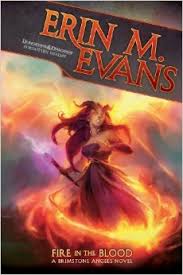

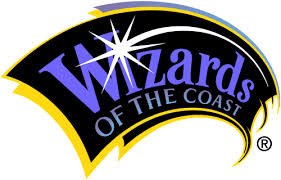
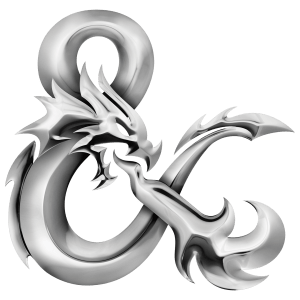
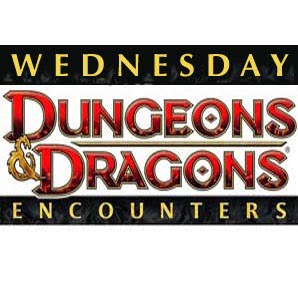



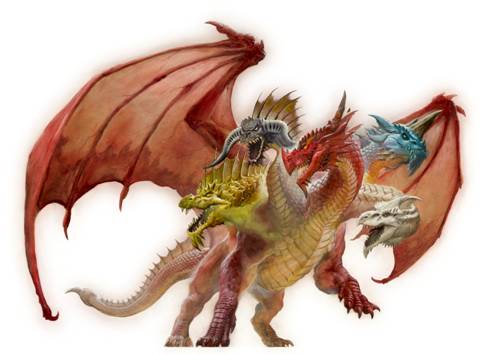

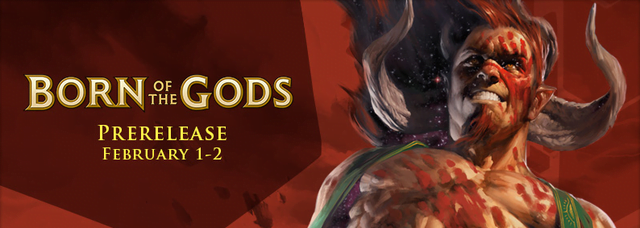


Social: